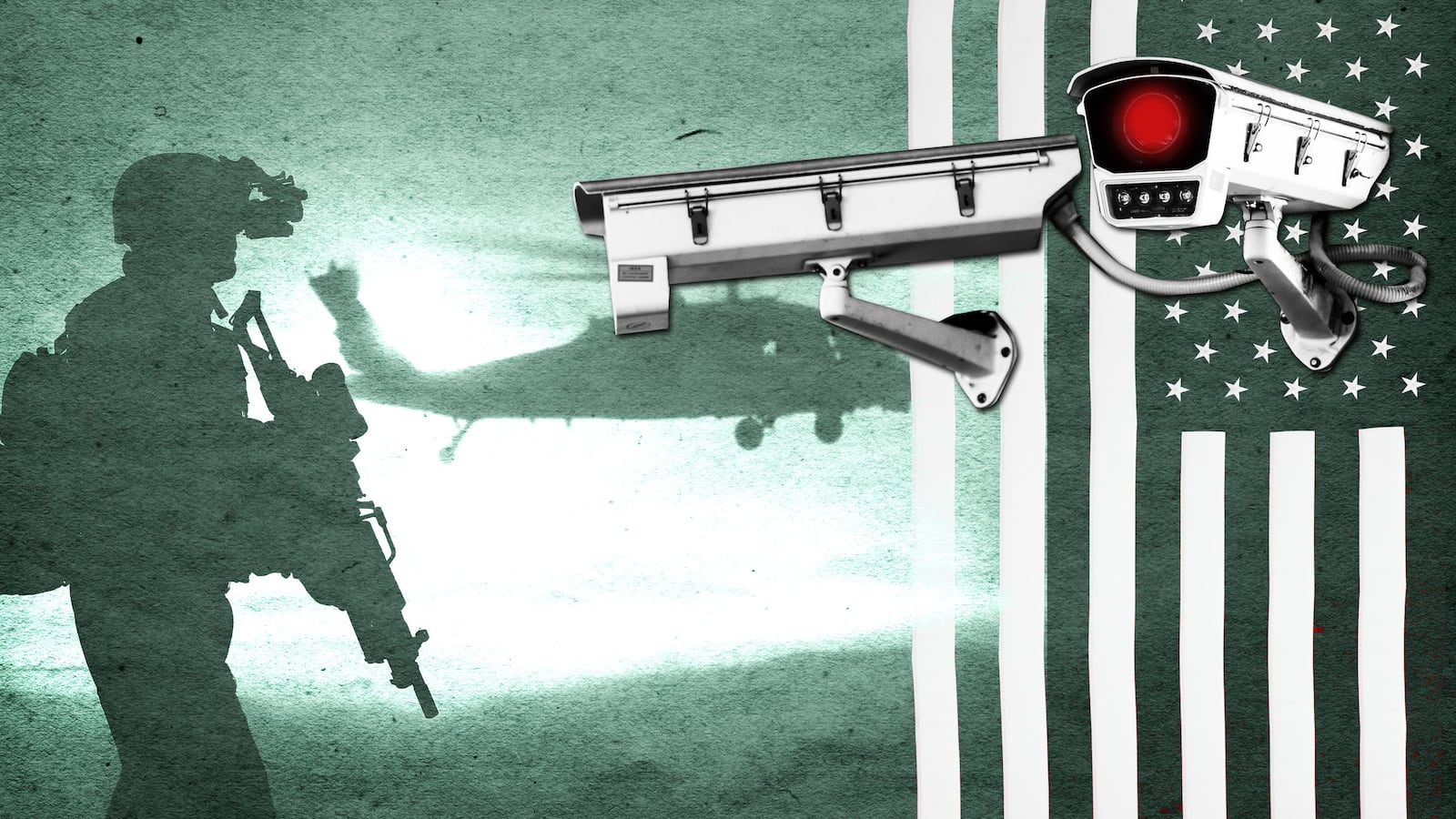The retreat of U.S. forces in Syria away from the Turkish invasion is having a downstream effect benefitting the so-called Islamic State. The American surveillance aircraft that had been watching ISIS are now watching their own troops.
Protecting the remaining U.S. forces in Syria is now the priority for the U.S. drones and manned aircraft overhead, according to a knowledgeable U.S. official who was not permitted to speak to reporters.
It’s a mission of necessity now that the remaining hundreds of American servicemembers in Syria have come under attack from the army of their NATO ally and the Syrian Kurds whom the U.S. betrayed are now welcoming in Bashar al-Assad’s Russian-sponsored forces. Their presence has propelled the U.S. in northeastern Syria toward an endgame, since the U.S. betrayal of the Kurds removed the local partner the U.S. needed to wage war against ISIS members—who are now breaking free of their prisons.
The remaining hundreds of U.S. troops, for now, have pulled back to the southern at-Tanf base near the Iraqi and Jordanian borders. American reconnaissance and surveillance over Syria is now about protecting bivouacking U.S. forces, the official said, rather than watching what happens to the newly-freed ISIS fighters.
Among the reconnaissance assets remaining over Syria are Apache attack helicopters, a measurement of preparation for a withdrawal under fire.
Defense Secretary Mark Esper said on Monday that the Turkish forces pose an “unacceptable risk” to the remaining American forces, prompting what he called a “deliberate withdrawal of U.S. military personnel from northeast Syria.” Esper blamed Turkey for the “release of many dangerous ISIS detainees”; hours earlier, President Trump blamed the Kurdish forces he double-crossed.
Uncertainty surrounds the remnant of the U.S. mission in Syria. But without both persistent overwatch and a partner on the ground—consequences of Trump acquiescing to Turkish President Recep Tayyip Erdogan’s invasion—the basic prerequisites for mitigating any ISIS revival in Syria are gone. Many observers now expect ISIS to reconstitute itself in some form.
In its media releases, ISIS still continues to claim a range of operations against Kurdish targets in attacks across northeastern Syria. In an operation announced on Sunday, ISIS media claimed its fighters shelled a U.S. military base in Hasakah governorate, not far from the sprawling ISIS detention camp in al-Hol, which it says U.S. forces have used to launch Apache raids against its forces.
Over a week after giving Turkey a green light to invade, Trump announced Monday that he will sanction Ankara economically for the invasion in a forthcoming executive order. In addition to declaring the Turks “responsible” for detaining ISIS fighters, Trump referenced keeping a “small footprint” of U.S. troops at at-Tanf “to continue to disrupt remnants of ISIS.” Without a Syrian partner on the ground and with overhead hardware focused on protecting themselves, it remains to be seen what that small force can accomplish.
Esper said in a Monday statement that the Turkish invasion—which the administration is now claiming to have always opposed despite Trump’s public acquiescence to it—had endangered the anti-ISIS mission. Erdogan will bear “full responsibility” for any ISIS resurgence, according to the Pentagon chief.
At the Beirut Institute Summit in Abu Dhabi, Gen. David Petraeus, former director of Central Intelligence and, prior to that, commander of U.S. Central Command, which oversees the U.S. military operations in the Mideast, warned there was no walking away from the threat of ISIS or from the region.
“Trying to leave the Middle East is a little like Michael Corleone trying to leave the Mafia,” Petraeus said, referring to the Godfather movies. “You can try but you are going to keep being pulled back in.”
Sir John Scarlett, former head of the Britain’s foreign intelligence service, MI6, said flatly there is “no substitute” for the U.S. in the region, notwithstanding Trump’s desire to bail out.
“It certainly does not appear there is a master plan,” said Petraeus.
“I am deeply concerned that a U.S. withdrawal will lead to an ISIS resurgence,” said Robert Ford, a former U.S. ambassador to Syria, and along with that will come huge ethnic displacement, refugee flows, and damage to U.S. credibility.
“Clearly ISIS is going to be resurgent after this,” Petraeus said, and there will be a new “tsunami of refugees.”
Some of the participants noted the irony of the way the situation is developing, as the U.S. will now, in practical terms, rely on the savage regime of Bashar al-Assad—which once it hoped to oust—to finish the job of eliminating ISIS fighters.
— with additional reporting by Adam Rawnsley








